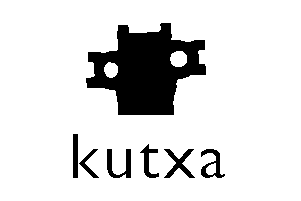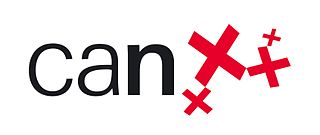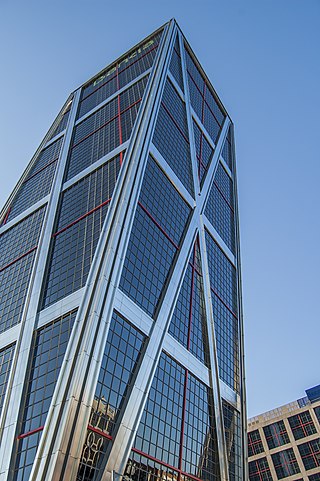
La Caixa, also known as the "La Caixa" Foundation, is a not-for-profit banking foundation based in Catalonia. Originally a savings bank (caja), it reorganized in the 2000s and 2010s: Its commercial assets are managed under its subsidiary CriteriaCaixa, which also has partial ownership of La Caixa's old banking business CaixaBank; those are used to fund La Caixa's Obra Social — social, cultural, scientific, and civic projects for the public good.

The Cuatro Torres Business Area (CTBA), also known as the Área de Negocios de las Cuatro Torres, is a business district located in the Paseo de la Castellana in Madrid, Spain, on the former Ciudad Deportiva of Real Madrid. The area contains the four tallest skyscrapers in Spain, and four of the ten tallest in the European Union: the Torre Emperador, Torre de Cristal, Torre PwC and Torre Cepsa. Construction of the buildings finished in 2008.

The Torre Cepsa is a skyscraper located in the Cuatro Torres Business Area in Madrid, Spain. With a height of 248.3 m (815 ft) and 45 floors, it is the second tallest of the four buildings in the Cuatro Torres Business Area complex, surpassed by Torre de Cristal by less than a metre. It is the second tallest building in Spain and the 4th tallest building in the European Union.

In Spain, a savings bank is a financial institution that specializes in accepting savings deposits and granting loans. Spanish banks fall into two categories: Privately owned banks (bancos) and government owned banks. The original aim was to encourage thrift among the very poor, but they evolved to compete with and rival commercial banks.

The Kutxa is a savings bank mainly operating within a regional scope in the Gipuzkoa province of Spain. Its Spanish name is Caja de Ahorros y Monte de Piedad de Gipuzkoa y San Sebastián but it was re-branded as Kutxa. On 1 January 2012 it merged with other Basque financial entities, Bilbao Bizkaia Kutxa (BBK) and Caja Vital Kutxa, to form Kutxabank.

The Caja de Ahorros de Asturias (Cajastur) is a savings and loan association of the Principality of Asturias. Caja de Ahorros de Asturias is the trade name of the enterprise while Cajastur is the commercial brand name it commonly uses.

Caja de Ahorros de Navarra or Caja Navarra or CAN was a medium-sized savings bank based in the Navarre province of northern Spain with headquarters in Pamplona. The financial institution broke up in 2012 among allegations of irregularities and failure by the relevant control organ of the Government of Navarre to audit the savings bank for several years. On an yearly basis, UPN's regional Government was handed over a copy-paste, two-page long activity report by Caja Navarra, as revealed in 2014.
Unicaja is a Spanish savings bank based in Málaga and chartered as a caja de ahorros providing retail banking services. The banks full name is Monte de Piedad y Caja de Ahorros de Ronda, Cádiz, Almería, Málaga y Antequera after the names of all the merged entities and the mount of piety structure.

Bilbao Bizkaia Kutxa (BBK) was a bank in Spain.

Caja de Ahorros del Mediterráneo was a Spanish savings bank in Alicante, Valencia.

Banesco Banco Universal C.A. is a Venezuelan financial institution whose principal branch is located in Caracas. The bank is part of the Asociación Bancaria de Venezuela.

Caja General de Ahorros de Canarias known as Caja Canarias was a Spanish saving bank that served the Canary Islands. It was taken over by CaixaBank in 2012.

Bankia was a Spanish financial services company that was formed in December 2010, consolidating the operations of seven regional savings banks, and was partially nationalized by the government of Spain in May 2012 due to the near-collapse of the institution. As of 2017, Bankia was the fourth largest bank in Spain, with total assets of €179.1 billion. In 2021, the bank merged with CaixaBank to create a new entity, initially preserving its original name.

La Casa Encendida is a social and cultural centre in central Madrid. It began operations in December 2002.

Fernando Arbós y Tremanti was a Spanish architect; best known for the Iglesia de San Manuel y San Benito.

Caja de Burgos was a medium-sized savings bank, and currently a banking foundation, based in the Province of Burgos in northern Spain with headquarters in Burgos city. As a savings bank, it was also known by Caja de Ahorros Municipal de Burgos.

The Provincial Savings Bank of Pontevedra was a Spanish financial institution based in the city of Pontevedra (Spain) dependent on the Provincial Council of Pontevedra, existing between 1930 and 2000.
Caja Castilla-La Mancha also known as Caja de Ahorros de Castilla-La Mancha or CCM was a Spanish savings bank headquartered in Cuenca.
Fundación Caja Cantabria is a Spanish banking foundation based in Santander. It is the entity resulting from the transformation, in 2014, of Caja de Ahorros de Santander y Cantabria, a savings bank whose commercial name was "Caja Cantabria", which had transferred its financial activity to Liberbank in 2011. Its activity consists of the maintenance and dissemination of the heritage and the social and cultural work inherited from the savings bank.

Caja de Ahorro Provincial de Guadalajara was a Spanish savings bank headquartered in Guadalajara that operated in that province and Madrid under the trade name Caja de Guadalajara. In 2010 it had 73 branches.


















